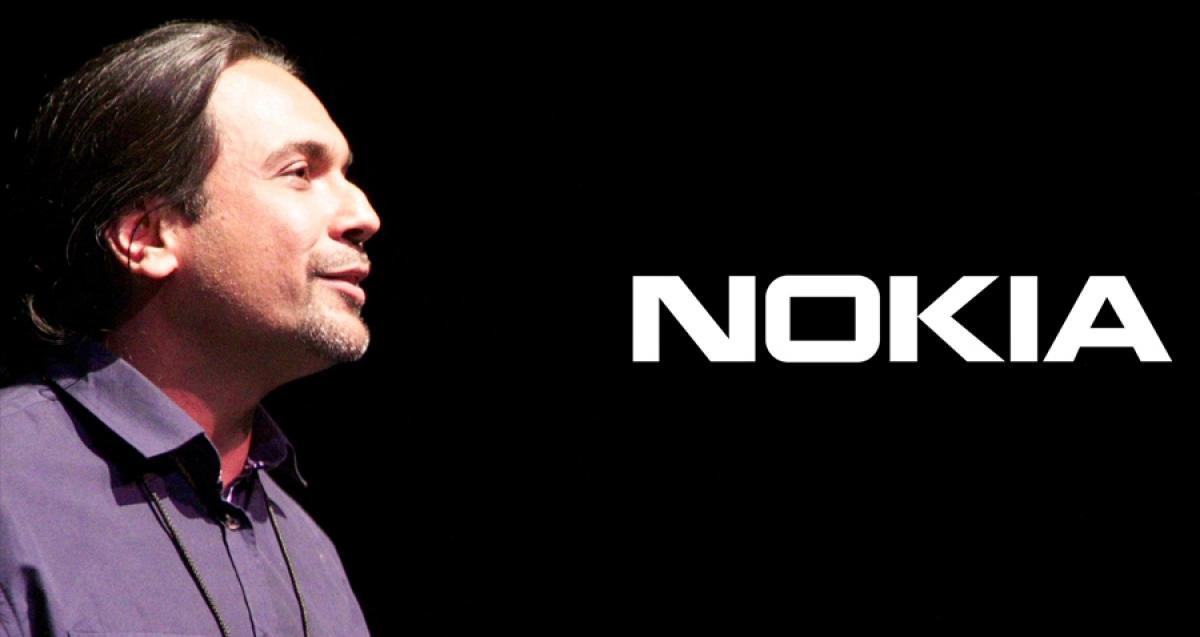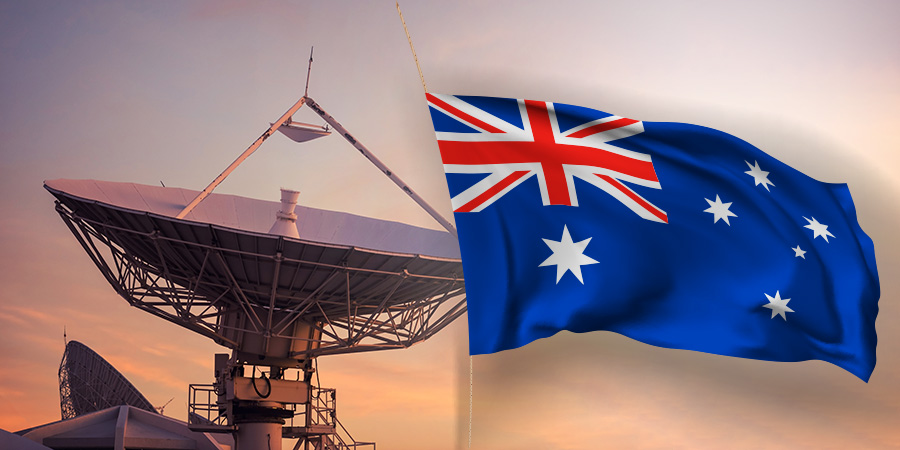Nokia’s recognizable brand spans the globe, from America to Europe, Russia, the Middle East and Asia Pacific. Undoubtedly its most diverse region, Nokia’s operations in Asia Pacific-Japan (APJ) covers a wide range of countries including Japan, Indonesia, Singapore, South Korea, Malaysia, Myanmar, Thailand, Philippines, Cambodia, Laos, Vietnam, Sri Lanka, Bangladesh, Australia, New Zealand and the Pacific Islands.
With more than 5,000 employees across the APJ region, Nokia is able to offer a strong local presence and understanding of specific requirements and business needs to its customers. Speaking exclusively to Telecom Review, Danial Mausoof, head of marketing and corporate affairs, Asia Pacific and Japan, Nokia, spoke about the company’s unique role in APJ; from important partnerships to 5G adoption and challenges related to regional diversity.
“Nokia’s role in Asia Pacific has been evolving rapidly. It’s a fairly diverse market,” said Danial Mausoof. “You can also say that about the Middle East for example, but I think that APAC diversity ranges from culture to religion to geographical, which has resulted in a lot of different inflection points for us [Nokia].”
South Korea and Japan are Nokia’s strongest markets for technology development in Asia Pacific. Nokia currently leads in Japan with the number one radio market share where the company works closely with SoftBank, a telecommunications and Internet corporation. Nokia has got a “leading radio-specific infrastructure” share in Japan according to Mausoof.
In South Korea, Nokia used to have a very small presence back in 2011-2012. Fast-forward to 2016 and the company now works with all three operators in the country and has a significant marketshare. In fact, Nokia is the biggest non-Korean vendor in South Korea.
“We’ve recently been working on public safety with Korean operators and the government, and we’re excited about the opportunities that this will bring, specifically around building the ecosystem more than just deployment of network infrastructure,” said Mausoof. “Korea has ultimately been a success story for us in the past four years and will be the powerhouse for the next phase of transformation.”
Mausoof also spoke about a change in the APAC market, how service providers in Japan and South Korea have reduced network spending in the last year or so. Nokia isn’t necessarily losing marketshare, in fact, they are very stable and setting an innovation pipeline with a focus on 5G and IoT. With the acquisition of Alcatel-Lucent, Nokia has set the ground to grab onto IP/Optical footprint in these areas.
“The slowdown on investment is due to the fact that the current networks have been built up to a capacity where you don’t really need to build anymore,” he said. “Japanese operators are very keen on having quality networks. Korea has more than 80 percent LTE penetration, with coverage in subways, and people using up to 18GB a month on their mobile. It’s not at saturation point, but it’s a point where they’re [Japan and South Korea] comfortable with the network that they have.”
While growth in Japan and South Korea slowed down for Nokia, the Southeast Asia corridor has opened up new opportunities. Nokia is now looking to developing countries in Southeast Asia like Indonesia where Nokia has had an “excellent momentum”. But there are of course challenges in Indonesia, like any developing nation, and Nokia is strongly positioned to tackle them. What makes Indonesia difficult is that the country’s mobile infrastructure market is flat and very concentrated in Jakarta, resulting in slow growth and tough competition. But Mausoof says Nokia is up to the challenge.
“We’ve also got really good traction happening in Vietnam which is opening up,” said Mausoof. “The Vietnam operators are very focused on quick 4G development. This is similar to Thailand, where we’re working with all of the operators. With the acquisition of Alcatel-Lucent we’ve gained momentum on IP/Fixed network solutions domain.”
Other important markets Mausoof mentioned that are driving the company forward in Asia Pacific include Singapore, Australia, New Zealand, Myanmar and the Philippines where Mausoof says there’s strong momentum.
“We’ve got growth in 4G and 3G in the Philippines, and we’re also looking into rural connectivity,” he said. “Myanmar is another country where we opened up in two years ago. We’re working with Ooredoo Myanmar, with whom we just launched 4G. Ooredoo has challenges in terms of marketshare in Myanmar because they are a 3G-only network. I think with 4G and looking to the future, Ooredoo will have an excellent service offering and certainly lead the broadband penetration in Myanmar.”
Asia Pacific’s regional diversity
Nokia works with customers across a massive range of countries in Asia Pacific and Japan, which are predominantly Asian countries. APAC is unique compared to other regions because of its wide-ranging diversity, from highly developed nations such as Japan, South Korea and Singapore, to emerging nations like Myanmar, Philippines and Indonesia, and also Australia and New Zealand which are considered to be Western countries closely linked to Britain.
“Australia and New Zealand are very ‘in-between’,” said Mausoof, talking about the diversity Nokia faces in Asia Pacific. “You’ve got the advanced markets such as Japan and Korea, and then you’ve got the developing markets. Australia is an advanced market and the huge landmass of the country gives us a good play from a services perspective. There’s a lot of play around planning and optimization – making the quality of Australia’s networks better.”
Nokia runs managed services with Vodafone Australia. Vodafone has recently gone through a massive transformation and has managed to maintain its popular brand and reputation in the region. Mausoof said in the last four years Vodafone has gone from losing subscribers to gaining subscribers. “They’ve done a stellar job as a company,” he said, adding that Nokia also works with other operators in Australia, such as Singtel Optus, a relationship spanning 25 years.
Southeast of Australia lies a uniquely important nation for Nokia in terms of testing and innovation. Although the two countries have very close ties, New Zealand is a much more dynamic market for Nokia according to Mausoof than Australia. He says Vodafone New Zealand, for example, is a “complete Nokia shop” which has allowed Nokia to perform exciting test trials.
“They [Vodafone] have got an excellent brand in New Zealand, driving quality of the networks,” said Mausoof. “I think New Zealand acts as an incubation ground, because New Zealand is able to do new things. You mention small cells, and New Zealand says ‘yes’.”
Nokia is able to perform important trials in New Zealand, such as the 700 MHz network tests which were the first to take place in Asia Pacific. Mausoof said New Zealand is great for Nokia because of its desire for incubating new technology when it comes to telecommunications. Australia on the other hand is more challenging in this respect because the market is more mature. He said Nokia’s acquisition of Alcatel-Lucent helped Nokia’s relationship with Spark New Zealand, another leading operator in the country.
Looking ahead: IoT & 5G in Asia Pacific
5G is a technological revolution that will bridge the physical, virtual and social worlds, according to Nokia. This transition into the programmable world will bring huge opportunities for operators to tap into. At the same time, it represents a fundamental change to the business environment and the ways business is conducted. 5G and IoT development is important for Nokia, says Mausoof, who spoke about the role of operators for 5G standardization and the challenges that lay ahead.
“In Korea we’re seeing 5G adoption and we’re looking at 5G trials,” said Mausoof. “IoT is of paramount importance in Korea. We’re conducting NB-IoT trials. We’ve got an advanced technology standard that looks at use-cases of IoT specifically in Korea because Korean customers are open to looking into IoT use-cases and adoption.”
While Mausoof is optimistic about the developments in technology in advanced nations like South Korea, overall, the diversity in terms of technology is huge in the Asia Pacific region. For example, in Myanmar he said there are challenges with deployment. It’s a contrast where you have 5G and IoT labs being set up in South Korea and Japan, compared with basic techniques still being used to do site deployment in Myanmar.
“APAC is a very strong market in terms of diversity and it’s full of opportunities,” said Mausoof. “Mobile, with our extended portfolio with fixed, IP, optical and applications, all add up to quite a lot of excitement for us in this region.”
With so much diversity in Asia Pacific, Mausoof said it’s obvious who the leaders in 5G adoption will be. “There’s not much to predict,” he said, adding that, “If you look at the way operators are currently geared up, because of their commitment to the market, I think the service providers in Japan and Korea are certainly at the front of the line right now.”
“Verizon has said that there will be 5G in 2017, while Korea is looking at the Olympics in 2018,” said Mausoof. “We’re looking at pre-commercial trials which will be more-or-less looking at live-user traffic. Standards are still being built around 5G. The standards are not there yet, so the definition from each vendor varies. If you look at 3GPP standards, that’s where 5G standardization will come together.”
Nokia has created 5G labs in Japan and South Korea so that it can present use-cases to customers who are interested in 5G, enabling Nokia to then drive them to some kind of pre-commercial hardware. Mausoof believes the standards will come through, but there are a lot of different elements to consider. For example, there’s IoT in 5G, so Nokia is already talking about an “IoT core overlay”.
“In our definition, we say this is the path to 5G already,” said Mausoof. “I think by 2017 at the earliest, we will see pre-commercial 5G trials happening.”
In advanced markets, the challenges are to remain innovative and ahead of the curve. Mausoof said Nokia needs to look at leveraging its end-to-end portfolio when it comes to how it’s setting itself up for the next wave of deployment in 5G and IoT. Nokia has an expansive end-to-end offering towards its customers which ensures its ability to continue the transformation journey while to enable connectivity mediums.
“In some countries we have finished deploying 4G (LTE) and we are optimizing performance to deliver better customer experience. The next phase of deployment will be different, said Mausoof. “For example, 5G has many elements to consider – it’s not just about radio sites anymore. There is also virtualization, mobile edge computing, small cells and IP, which all add up to the overall orchestrated deployment. Nokia is today positioned as the leader across all areas of network evolution and we are investing heavily in R&D to ensure that we are a partner on this journey.”
Mausoof concluded saying: “The industry is changing, the end-user is getting very demanding and technology is evolving at an extremely fast pace. We [Nokia] need to be at the leading edge of innovation, stand as a trusted partner for the next phase of evolution, and help to develop new and meaningful services that ultimately expand the human possibilities of technology.”







